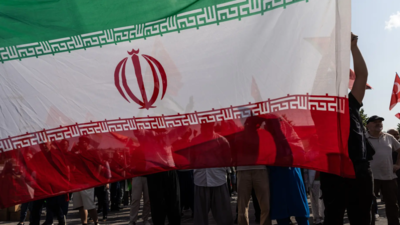What is Bahrainization? The Kingdom’s drive to localise jobs across multiple sectors | World News

TL;DR:
Bahrainization is Bahrain’s official workforce nationalization policy aimed at increasing Bahraini employment in the public and private sectors.- It sets sector-specific ratios requiring companies to hire Bahraini nationals or face restrictions on government contracts and foreign worker permits.
- Employers benefit from wage subsidies up to 70% in the first year, tapering to 30% in the third and face fines or imprisonment if they fail to comply.
- Administration is handled by the
Labour Market Regulatory Authority (LMRA), working closely with Tamkeen, Bahrain’s labour fund.
Bahrainization, began in the 1980s under a government-led initiative known as “Project 10,000”, designed to train and transition Bahraini nationals into private-sector roles. By the 1990s, quotas were introduced across multiple sectors. New business licenses triggered mandatory national hiring percentages, requiring firms with over 10 employees to have at least 20% Bahraini staff, with annual incremental growth to a 50% workforce threshold. Small firms were required to employ at least one Bahraini besides the owner. These foundational policies were formalized into legislation in 2006 through the creation of the Labour Market Regulatory Authority, which oversees foreign work permits and Bahrainization targets throughout the private sector.
How Bahrainization Works in Practice
Under current regulation, private-sector employers must meet Bahrainization ratios specific to their industry. These ratios are actively enforced: failure to comply disqualifies firms from government contract tenders and may block further employment of foreign workers. As per News of Bahrain, public-sector organizations had already achieved 100% Bahrainization in 15 agencies by March 2024.
- Incentives and Wage Subsidies
To ease the shift, the state finances wage subsidies via Tamkeen. Employers can receive up to 70% of Bahraini wages in Year 1, 50% in Year 2, and 30% in Year 3. Tamkeen is funded through fees imposed on companies for foreign work permits, with 80% of that revenue directed to national training and employment programmes. Non-compliance carries legal weight. Employers may face BHD 300 per foreign application, fines ranging from BHD 500 to BHD 1000, suspension of business operations, and even closure. Individuals with violations may face penalties of BHD 1000–2000 or imprisonment, and expatriates can be deported.
Key Sectors and Reform Priorities
- Government Sector Progress
News of Bahrain reports, as of early 2024, nine out of 17 government ministries and municipal councils had fully eliminated foreign staff, replacing them entirely with Bahraini employees. Hiring mandates now require public agencies to train Bahraini workers as a core duty of any non-national staff member.
- Focused Professional Sectors
In mid-2025, Bahrain’s Shura Council advanced draft legislation mandating up to 50% Bahrainization in sectors like healthcare, banking, legal services, aviation, education, and accounting. The National Health Regulatory Authority will oversee healthcare-specific targets, ensuring that expatriates are only retained where no qualified Bahrainis exist.
- Corporate and Trade Responses
Business associations, including the Bahrain Chamber of Commerce and Industry have welcomed the intent to localize the workforce. However, they urged cautious implementation to avoid unintended consequences such as talent shortages, especially in technical fields where Bahraini participation is still evolving.
Implementation & Oversight
The Labour Market Regulatory Authority (LMRA) was established in 2006 to manage work permits, enforce Bahrainization targets, and regulate residency and employment rules. The agency collects fees from foreign work permits and channel these into Tamkeen, which is responsible for training, wage subsidy schemes, and local talent development.
- Annual Targets and Reporting
In early 2025, Bahrain reported achieving 24% of its target to employ 25,000 Bahrainis in the private sector, while 28% of a training goal to train 15,000 citizens had been met. These figures were presented to the Cabinet at Gudaibiya Palace, illustrating progress on annual quotas.
Challenges and Ongoing Reforms
- Skills Gap and Workforce Mismatch
Employers in sectors such as engineering, accounting, and medical fields have raised concerns over the availability of qualified Bahraini professionals. Proposals to fully Bahrainize engineering, HR, media, and hospitality roles have sparked debate about feasibility and whether sufficient training infrastructure exists. Some critics also fear disruption if firms are forced to replace experienced expatriates prematurely. Wage subsidy schemes and partnerships with local institutions like Bahrain Polytechnic aim to close these gaps over time.
- Strategic Alignment with National Vision
Bahrainization is central to the Economic Recovery Plan Pillar 5 and Bahrain Vision 2030, which focus on private-sector growth, reducing reliance on oil, and meaningful employment for citizens. Public–private initiatives such as large-scale shared service centres, youth training centres, and Tamkeen collaborations are part of an effort to create 20,000 Bahraini jobs and train 10,000 nationals per year through 2024.
- Comparative Context: Bahrainization and
Gulfization
Bahrainization falls under the broader umbrella of “Gulfization”, a regional strategy seen in GCC countries like Saudization, Qatarization, and Emiratization. These policies aim to reduce dependency on expatriate labour by instituting quotas, training, and layered penalties or incentives. Bahrain differed by implementing early nationalization efforts in the 1980s and later abolished the Kafala sponsorship system, enabling greater mobility and labour rights for migrant workers.
Impact to Date and Outlook
Government agencies achieving 100% Bahrainization showcase how sectors can fully transition to national workforces. This is backed by policy instruments mandating training clauses for hiring managers of expatriates. Employment and training figures indicate that roughly one-quarter of annual targets were already reached within the first quarter of 2025. This implies that by year-end, a majority of the planned nationalization benchmarks may be met if momentum continues. As Bahrain accelerates Bahrainization in sectors like healthcare and banking, the potential conflict between demand for skilled national talent and existing workforce structures remains a key governance challenge. However, by anchoring implementation in training, wage support, and phased targets, the policy aims for sustainable growth.
Bahrainization in 2025
As of mid-2025, Bahrainization has evolved from a quota-based initiative into a structured national workforce strategy, backed by legal enforcement, financial incentives, and capacity-building infrastructure. Bahrain’s policy now spans public entities fully Bahrainized, sector-specific legislation in progress for professional roles, collaborative training systems via Tamkeen, and firm penalties for non-compliance. This multifaceted framework aligns closely with Vision 2030 and Bahrain’s broadened economic objectives. Success indicators like rising citizen employment rates, institutional compliance, and employer engagement suggest Bahrainization is entering a more mature phase balancing citizen aspirations, private-sector needs, and national growth targets. Given the complexity and political sensitivity of the policy, Bahrain’s approach hinges on the continuous alignment between regulation, education, business readiness, and social inclusion. For the coming years, maintaining this balance will determine whether Bahrainization can deliver structural transformation without disrupting competitiveness, positioning Bahrain as a model in GCC workforce nationalization strategies.






